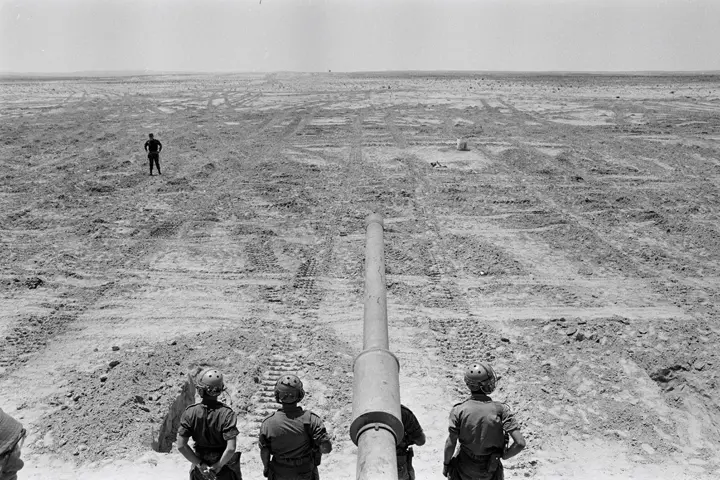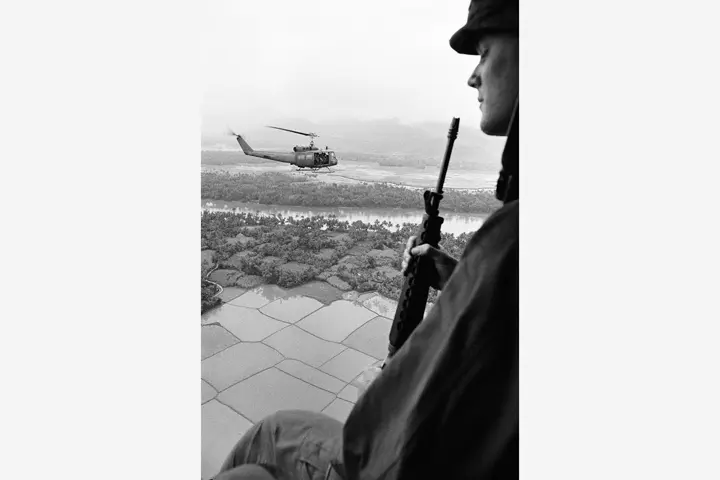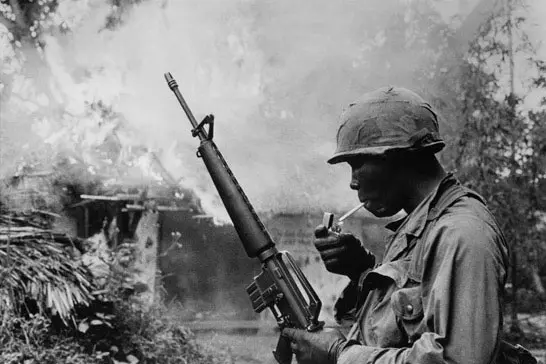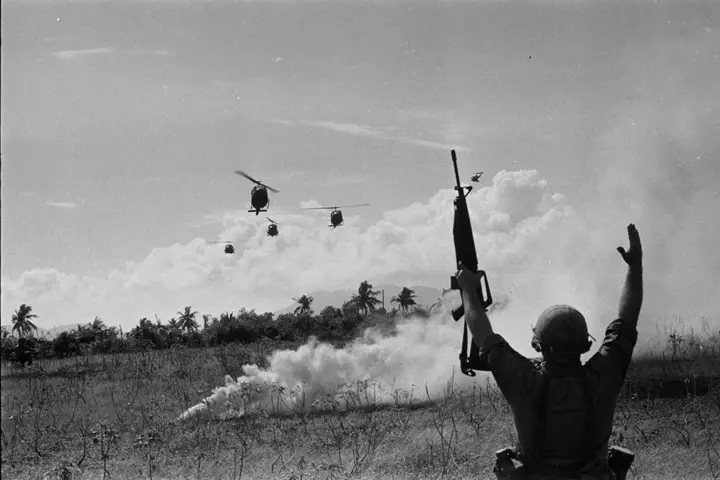Gilles Caron, who at the beginning saw the war correspondent as a hero, began to question the meaning and value of his profession very early on. He was one of the first photojournalists to show signs of a great inner conflict and a kind of moral crisis: would it be enough just to be a witness or a mere spectator? Could he do more than take pictures? His answers led him to move his camera away from cliché images and to pause, for as long as it took, in the lives and feelings of all those touched by the war.
More than combat action, Caron focuses on the individuality of the men and women with whom he crosses his path in these scenarios. When consulting his files we can’t help but be surprised by the insistence and devotion that the photographer dedicates to the search of these images. More than the obvious, these are ‘outline images’ that skilfully describe situations without offering the viewer-reader major clues about the event in question.
As a result of this mission, the isolated figures are omnipresent in his work and are treated in accordance with a range of attitudes where the scale plays a fundamental role, throwing them into the immensity of nature, underlining their impotence and the uncertainty of their destiny.
In his work there are hundreds or thousands of faces in close-up or characters isolated by the framing or the focus so that they always stand out as individuals. These images are not portraits in the classical sense of the term - identities are never known by us - and they approach the sketch more closely in the manner of the drawing that tries, as in a script or storyboard, to make us find what we presume to know. In fact, his photographs confront us with the deepest place of our restlessness - one day, someone may also ask for the name of that face that is ours.
BIO
Gilles Caron, born in 1939 in Neuilly-sur-Seine and dubbed by Henri Cartier-Bresson of "French Robert Capa", despite the unfortunately short career has brought to french photojournalism a new life.
In 1959 and after beginning his studies in journalism, Gilles Caron completed 22 months of military service in Algeria, a period that will mark him deeply. In 1966 he founded the Gamma agency with Raymond Depardon, and from then on he covered all the great events of the time: Middle East, Vietnam, Chad, Northern Ireland, Biafra ... Wherever there was a conflict, Gilles Caron was there with his camera, until the fateful day April 5, 1970 in which he disappeared in Cambodia in a zone controlled by the Khmer Rouge.
As a war reporter, Caron met countless times with extreme situations but never ceased to be moved by the Nouvelle Vague cinema and the bustling French musical scene of the 60s. He occasionally worked in Godard and Truffaut's films and even as a fashion photographer. This shift to the world of cinema and fashion which, from the outset, could be seen as something alien to his work, has left an important mark in his aesthetic vocabulary, as can be seen in his photographs of the manifestations of the Quarter Latin or the streets of Ulster.
Leica Gallery Porto
Leica Gallery Porto Rua de Sá da Bandeira, 48-52
4000-427 Porto
Portugal
Saturday: 10:00 - 13:00 and 14:00 - 18:30
Sunday: closed



